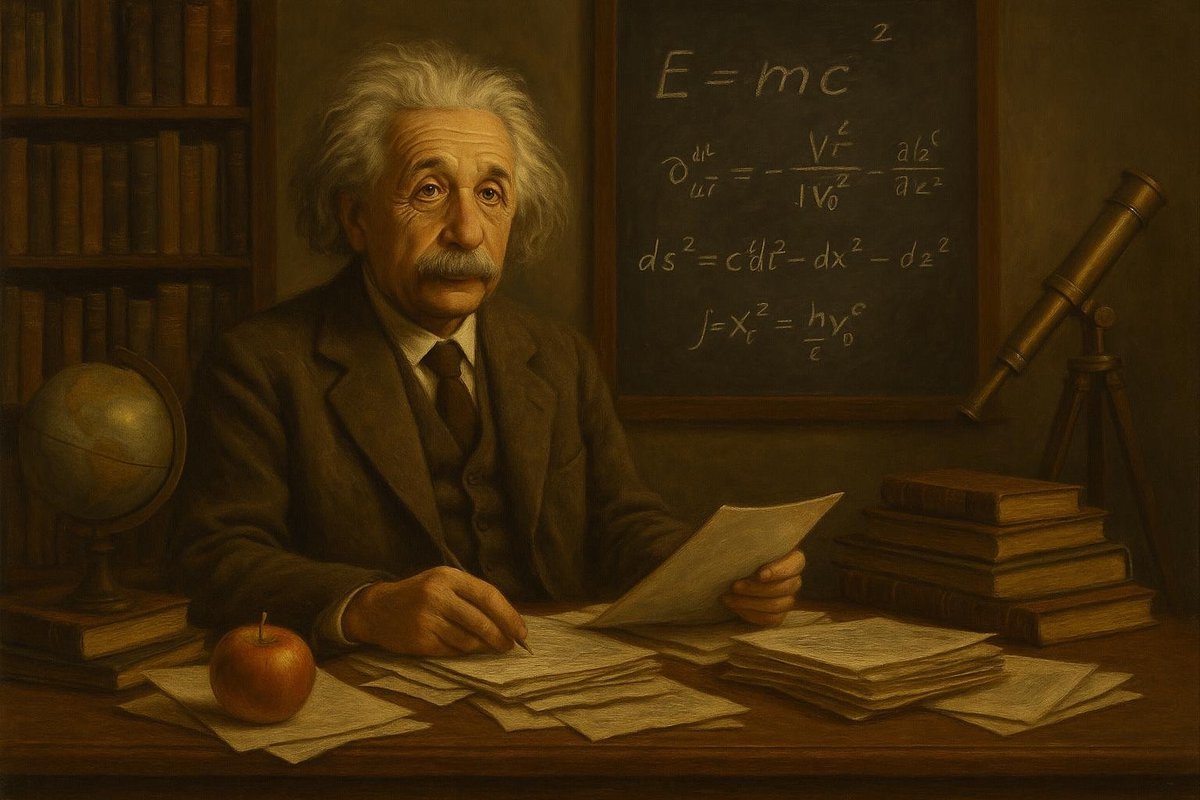
A Universe Unbound: Rethinking Space and Time
Imagine a beam of light speeding through the void of space. How fast is it moving, and does its speed change if you’re racing alongside it? For centuries, the answers seemed simple, rooted in Newtonian physics. But in 1905, Albert Einstein presented a theory that would alter our perception of space and time forever: the Theory of Relativity. His groundbreaking ideas emerged during a period of rapid technological and scientific progress, challenging the established norms of physics. No wonder many people consider Einstein’s contribution as one of the most profound intellectual achievements of the 20th century.
The Limitations of Newtonian Physics
Before Einstein, Sir Isaac Newton’s laws of motion and universal gravitation dominated our understanding of the physical world. These principles, developed in the 17th century, explained the motion of planets and everyday objects with remarkable precision. However, as the 19th century drew to a close, cracks began to appear in Newton’s framework:
- Newton’s laws couldn’t explain the peculiar behavior of light and electromagnetism.
- Experiments, like the Michelson-Morley experiment of 1887, showed that light’s speed appeared constant regardless of Earth’s movement.
- New phenomena, such as the photoelectric effect, resisted classical explanations.
These inconsistencies prompted scientists to reconsider fundamental assumptions about space and time. Interestingly, this period of scientific doubt coincided with rapid developments in technology and industry, fueling the demand for a more accurate framework.
Theoretical Breakthrough: Einstein’s Vision
Einstein’s approach was as revolutionary as it was elegant. He proposed that space and time were not distinct entities but interwoven into a single continuum known as space-time. This new perspective had radical implications:
- Time could dilate, or slow down, relative to an observer’s speed—an idea famously illustrated by the twin paradox thought experiment.
- Mass could curve space-time, explaining the gravitational pull of massive objects.
- Energy and mass were equivalent, encapsulated in the iconic equation E=mc².
These insights, published in his 1905 paper on special relativity and expanded in 1915 with the general theory, transcended existing models. Einstein’s intellectual style was characterized by deep thought experiments and an unyielding quest to reconcile theory with observable reality. His work transformed the landscape of physics, providing a theoretical basis for technologies like GPS and nuclear energy.
Supporting Evidence: Proving the Theory
Initially, Einstein’s ideas were met with skepticism. How could space and time bend and stretch? Yet, compelling evidence soon emerged:
- In 1919, Sir Arthur Eddington’s expedition confirmed Einstein’s prediction that the sun’s gravity would bend starlight, a phenomenon observed during a solar eclipse.
- Subsequent experiments demonstrated time dilation, such as precise atomic clock measurements on high-speed aircraft.
- Modern physics continues to validate relativity through high-energy particle accelerators and cosmological observations.
These experimental successes helped solidify Einstein’s theories as foundational to modern physics. His relentless pursuit of empirical evidence underscored a scientific integrity that inspired generations of researchers.
Modern Relevance: Relativity in the Contemporary World
As time goes on, the principles of relativity remain deeply embedded in our technological and scientific fabric:
- GPS systems rely on relativistic calculations to ensure pinpoint accuracy.
- Astrophysics and cosmology use relativity to explore black holes and the expanding universe.
- The theory continues to guide quantum mechanics and the search for a unified theory.
Einstein’s work transcended the limits of its era, becoming a cornerstone for future science. It encourages us to question and redefine boundaries, reminding us that the pursuit of knowledge is endless and essential.
In conclusion, Einstein’s mindset—the ability to challenge conventions and embrace complexity—remains vital today. It’s a reminder that transformative ideas can arise when curiosity triumphs over complacency.
Fuel Someone Else’s Curiosity
This exploration of Einstein’s monumental contribution to science is just the tip of the iceberg. Invite friends and fellow enthusiasts to delve deeper into these ideas. Share the wonder of discovery and inspire curiosity in those around you. After all, the pursuit of understanding is best enjoyed together.

Leave a Reply